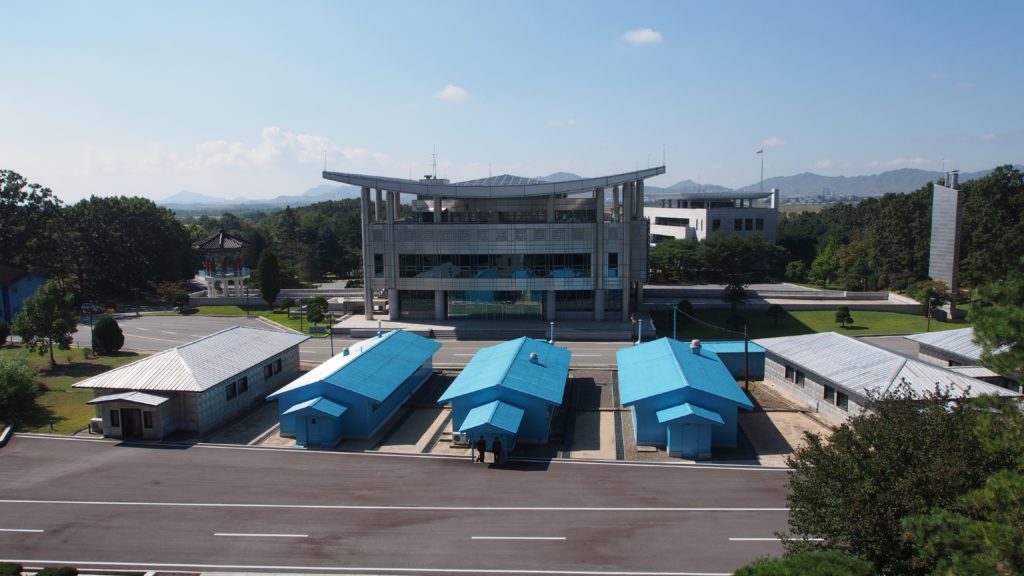The Peninsula
North Korean Breakthrough?

By Mark Tokola
There were startling headlines on March 6 that North Korea is prepared to enter into talks, to freeze its nuclear and missile testing, and is willing to abandon its nuclear weapons. This would be welcome news, but of course there are caveats and questions. The first caveat is that this is North Korea’s new position as described by the South Korean delegation following talks in Pyongyang on March 5. There is no reason to doubt the accuracy of the South Korean account of the talks, but it would be reassuring to hear the change of heart from North Korea directly.
The three main elements of the new North Korean position are reported to be: (1) North Korea is prepared to suspend nuclear and missile testing while prospective talks with the United States are ongoing; (2) North Korea sees no need to have nuclear weapons if the “military threat to North Korea is eliminated and its security guaranteed”; and (3) Kim Jong-un has offered a summit meeting with South Korea President Moon Jae-in in April at Panmunjom, in the DMZ.
The North Korean government has a record of backtracking on its offers and adding new conditions, so it may take a while to see how it will elaborate on the three elements. An early question will be whether it will expect that U.S.-ROK joint military exercises, scheduled for April, to be modified. If it does not — and there is some reporting that Kim Jong-un told the South Korean delegation that he understands that the April exercises will take place as scheduled — that would be an encouraging sign that Kim Jong-un actually intends to negotiate. Washington and Seoul, for their part, may want to consider how to shape the exercises. Planning and preparations are well underway for the April exercises, but there is some latitude to shape their public messaging.
On the second element, what North Korea would consider the elimination of the “military threat” to North Korea and what would constitute a “security guarantee,” are open to wide interpretation. At one end of the spectrum would be their acceptance of a statement by the United States that it has no intention of attacking North Korea. At the other end would be a demand that U.S. forces leave the Korean Peninsula and that the U.S.-ROK military alliance be scrapped. North Korea may want assurances that its security is not threatened while maintaining its ability to threaten others, with conventional if not nuclear weapons.
A North Korean freeze on nuclear and missiles testing would be a positive development. They have not tested since November and that has eased tensions. A testing freeze would also be relatively verifiable. Missile launches and nuclear detonations are difficult to hide. However, it would be a long road from a freeze to denuclearization, which would require an intrusive inspection regime. The U.S. and South Korean (and Chinese and Russian and United Nations) position that denuclearization must be “complete, verifiable, and irreversible,” could only be met by the outcome of complex and probably difficult negotiations. Even a suspension of the production of nuclear material would not be sufficient because North Korea probably has produced enough, and hidden it, that it would require an enormous efforts to have confidence that it had actually “denuclearized.”
It does feel like a concession on Kim Jong-un’s part that he is offering to hold the inter-Korean summit at Panmunjom rather than Pyongyang. Another test of his sincerity is whether he will expect “payment” in exchange for holding the summit, either through economic assistance, an easing of sanctions, or a suspension of U.S.-ROK military exercises. An unconditional summit could lead to positive outcomes: an agreement on family reunions, humanitarian and medical assistance to North Korea that North Korea would allow to be monitored to ensure it serves its intended recipients, or cultural exchanges that might ease tensions without providing North Korean economic gains.
Has there been a breakthrough? It is too soon to tell, but it certainly needs to be tested. It is prudent to remain skeptical and too soon to make any concessions to North Korea before it makes any concrete steps towards denuclearization. It seems most likely that North Korea may be trying to drive a wedge between Washington and Seoul by trying to lure South Korea into weakening the alliance. Or, North Korea may be making a sham offer with the intent of being able to blame the United States and South Korea when the diplomatic moves collapse. This could be a way of lessening pressure from Beijing.
However, the possibility should be considered that this is an early sign of what success might look like. The goal of the United States and South Korea has been to pressure North Korean into negotiations leading to denuclearization. If maximum pressure and isolation were to work, wouldn’t it lead to something like the March 5 headlines?
Mark Tokola is the Vice President of the Korea Economic Institute of America. The views expressed here are his own.
Photo from Clay Gilliland’s photostream on flickr Creative Commons.
